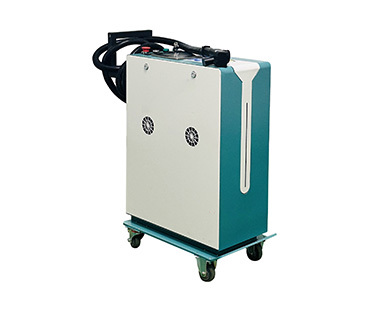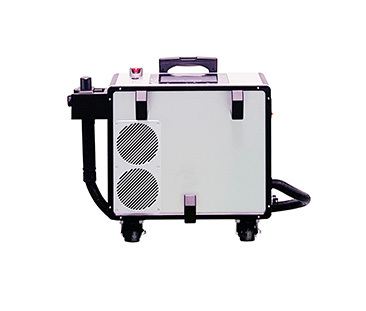How Light and Handheld Laser Welding Revolutionizes Manufacturing
Release time:
2025-04-24
How Light and Handheld Laser Welding Revolutionizes Manufacturing Table of Contents 1. Introduction to Laser Welding Technology 2. Understanding Light and Handheld Laser Welding 3. Key Benefits of Light and Handheld Laser Welding 4. Versatile Applications of Laser Welding in Manufacturing 5. Comparison with Traditional Welding Methods 6. The Future of Light and Handheld Laser Welding 7. Common Ch
How Light and Handheld Laser Welding Revolutionizes Manufacturing
Table of Contents
- 1. Introduction to Laser Welding Technology
- 2. Understanding Light and Handheld Laser Welding
- 3. Key Benefits of Light and Handheld Laser Welding
- 4. Versatile Applications of Laser Welding in Manufacturing
- 5. Comparison with Traditional Welding Methods
- 6. The Future of Light and Handheld Laser Welding
- 7. Common Challenges and Solutions in Laser Welding
- 8. Frequently Asked Questions (FAQs)
- 9. Conclusion
1. Introduction to Laser Welding Technology
In recent years, **laser welding** has emerged as a groundbreaking technology within the manufacturing sector. Unlike traditional welding methods, which may involve cumbersome machinery and extensive setup, light and handheld laser welding offers a more efficient and precise alternative. This innovation caters to various industries, from automotive to electronics, transforming how manufacturers approach welding tasks.
2. Understanding Light and Handheld Laser Welding
Laser welding uses a concentrated beam of light to join materials together. The high intensity of the laser beam generates heat, melting the materials at the joint, which then solidifies to form a strong bond. Light and handheld laser welding systems are portable, making them ideal for applications that require mobility and flexibility, such as in-field repairs and assembly tasks.
2.1 Types of Laser Welding Technologies
There are several types of laser welding technologies commonly used in manufacturing:
2.1.1 CO2 Laser Welding
CO2 lasers are suited for welding thicker materials, providing deep penetration and high-quality seams.
2.1.2 Fiber Laser Welding
Fiber lasers are known for their efficiency and versatility, often used in applications requiring precise and intricate welding.
2.1.3 Diode Laser Welding
Diode lasers are compact and low-cost, making them popular for small-scale operations and specific applications.
3. Key Benefits of Light and Handheld Laser Welding
The adoption of light and handheld laser welding brings numerous advantages to manufacturers:
3.1 Precision and Quality
Laser welding provides precise control over the welding process, resulting in cleaner and more uniform welds. This precision minimizes defects and enhances the overall quality of the final product.
3.2 Speed and Efficiency
The speed of laser welding significantly reduces production times. Handheld systems allow operators to maneuver quickly, making it possible to complete projects in less time compared to traditional methods.
3.3 Cost-Effectiveness
Although the initial investment in laser welding equipment may be higher, the long-term savings in labor costs, material waste, and reduced rework make it a cost-effective solution for manufacturers.
3.4 Minimal Heat Affected Zone (HAZ)
Laser welding produces minimal heat, resulting in a smaller heat-affected zone. This characteristic preserves the integrity of the surrounding materials, preventing warping and distortion.
3.5 Environmentally Friendly
Laser welding produces fewer fumes and pollutants compared to traditional welding methods, contributing to a safer and more environmentally friendly workplace.
4. Versatile Applications of Laser Welding in Manufacturing
Light and handheld laser welding technologies find applications across various sectors, showcasing their versatility:
4.1 Automotive Industry
In the automotive sector, laser welding is used for joining body panels, frame components, and exhaust systems. The precision of laser welding contributes to the structural integrity and safety of vehicles.
4.2 Electronics Manufacturing
Laser welding is critical in the electronics industry for assembling delicate components, such as circuit boards and battery packs, where precision and minimal thermal impact are essential.
4.3 Aerospace Sector
Aerospace manufacturers utilize laser welding for its ability to produce lightweight and high-strength joints, crucial for aircraft performance and safety.
4.4 Medical Device Production
In the medical field, laser welding is employed to create durable and hygienic devices, ensuring compliance with strict regulatory standards.
4.5 Jewelry and Artisanal Applications
Artists and jewelers use handheld laser welding for intricate designs, allowing for fine detailing without compromising the integrity of the materials.
5. Comparison with Traditional Welding Methods
When comparing light and handheld laser welding with traditional welding methods, several distinctions emerge:
5.1 Setup and Equipment
Traditional welding methods often require extensive equipment setup and fixed workstations. In contrast, handheld laser systems are portable and require minimal setup time.
5.2 Skill Requirements
While traditional welding techniques often necessitate skilled labor for operation, laser welding can be operated with less specialized training, making it more accessible for diverse operators.
5.3 Weld Quality and Consistency
Laser welding consistently produces high-quality welds with minimal defects, outperforming many traditional methods that may vary based on operator skill.
6. The Future of Light and Handheld Laser Welding
As technology continues to evolve, the future of laser welding looks promising. Here are some trends shaping its development:
6.1 Integration of Automation and Robotics
The integration of laser welding with automated systems and robotics is expected to enhance efficiency and precision, allowing for faster production cycles.
6.2 Advancements in Laser Technology
Continued advancements in laser technologies will lead to more powerful and efficient systems, expanding the range of materials and thicknesses that can be welded.
6.3 Increased Adoption Across Industries
As awareness of the benefits of laser welding grows, more industries are likely to adopt this technology, leading to broader applications and innovations.
7. Common Challenges and Solutions in Laser Welding
Despite its advantages, manufacturers may face challenges when implementing light and handheld laser welding:
7.1 Equipment Costs
While the long-term savings are appealing, the initial investment in laser welding equipment can be a barrier. However, leasing options and finance plans can mitigate this challenge.
7.2 Material Compatibility
Not all materials are easily welded with lasers. Understanding material properties and choosing the right laser type can help overcome compatibility issues.
7.3 Training and Skill Development
Although laser welding requires less specialized training than traditional methods, operators still need proper instruction. Investing in training programs can ensure that employees are well-equipped to handle laser welding systems.
8. Frequently Asked Questions (FAQs)
8.1 What materials can be welded using laser welding?
Laser welding is effective on a variety of materials, including metals, plastics, and composites. Its versatility makes it suitable for numerous applications.
8.2 How does laser welding compare to MIG and TIG welding?
Laser welding offers higher precision and a smaller heat-affected zone than MIG and TIG welding, making it preferable for delicate applications.
8.3 Is laser welding suitable for large-scale manufacturing?
Yes, laser welding can be used in large-scale manufacturing, especially when combined with automation and robotics for high production rates.
8.4 What safety measures are necessary when using laser welding?
Proper safety protocols include using protective eyewear, ensuring adequate ventilation, and following manufacturer guidelines for equipment operation.
8.5 Can laser welding be used for repairs?
Absolutely! Handheld laser welding systems are particularly useful for on-site repairs, offering flexibility and efficiency.
9. Conclusion
**Light and handheld laser welding** has undeniably revolutionized the manufacturing landscape, providing efficient, precise, and versatile solutions across various industries. As technology continues to advance, the benefits of laser welding will only expand, solidifying its place as a cornerstone of modern manufacturing. By embracing this innovative approach, manufacturers can enhance productivity, reduce costs, and maintain high-quality standards, ensuring success in an increasingly competitive market.
Key words:
- All
- Product Management
- News
- Introduction
- Enterprise outlets
- FAQ
- Enterprise Video
- Enterprise Atlas
Recommend News





Contact Us
Phone: +86 (China) 152-5267-7152
WhatsApp: +86 (China) 152-5267-7152
E-mail:info@udibomfg.com
Address: Building 1002 Redstar International Technology Park, Mudu Town, Wuzhong District, Suzhou City, Jiangsu Province, China





